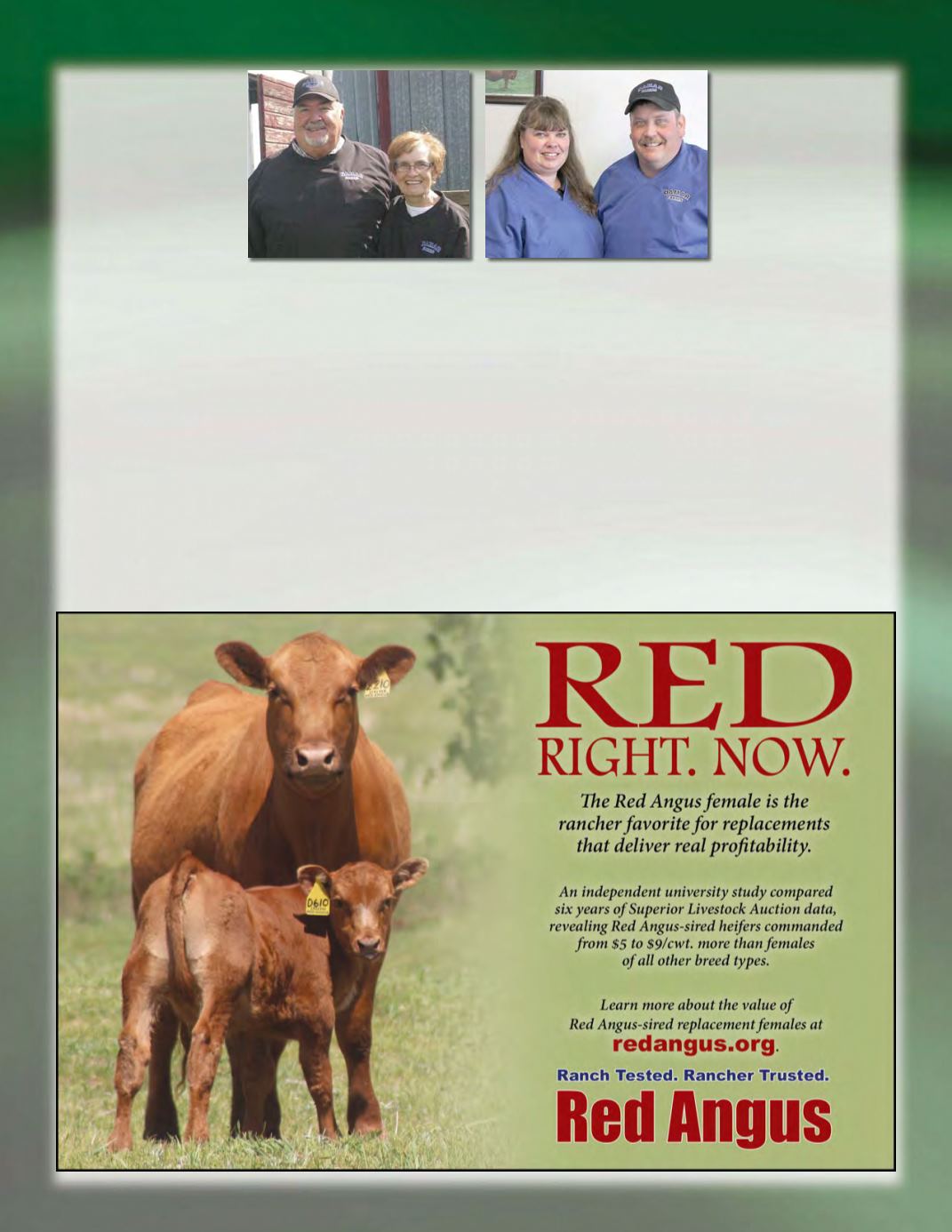
DAMAR FARMS
La s t Da n c e
THE RED ANGUS STORY OF DAMAR FARMS
Dr. Dave “Doc” & Mary Hehli
Denise & Mitch Larson
In 1997, Dr. Dave ”Doc” Hehli,
at the urging of his son Todd
who was in the Limousin
business, made his initial
investment in Red Angus
cattle at the Beckton Stock
Farms operation. At the time,
Doc did not realize there were
different classifications of
Red Angus cattle and out of
the three potloads of females
he bought that day, over 2/3
were 1B percentage animals. The cattle were good and Doc decided he
really liked Red Angus as a breed.
The next year, Doc attended the Bootjack Dispersal in October 1998
and purchased four potloads of 1A 100% cattle from one of the most
prestigious Red Angus programs in the country. At the time, he didn’t
realize what a powerful set of females he had purchased until five or
six years later when he started to venture out and promote Damar
Farms and listened to the respect cattlemen had for his genetics based
off of the Beckton and Bootjack operations.
His other purchases early on included 11 head from the Dunphy’s
Shamrock Nook Red Angus herd of Wisconsin and 17 head from
the Messmer Dispersal of North Dakota. It was in the Messmer
Dispersal that Doc made some phenomenal purchases including
Messmer Millie 124P, the
dam of Messmer Packer, and
Messmer Pandora M186,
the dam of Messmer Jericho
and Messmer Joshua. Doc
said he learned while in the
Holstein business to buy the
top cows and the “headliners”
in every sale and only buy the
best. This philosophy sets
the Damar program apart
from many in the business
– Doc says they implanted 600 embryos a season during the prime
production years and spent in excess of $100,000 a year in doing so.
The dedication and drive that Dr. Dave Hehli put toward the Damar
Farms program offers every serious Red Angus and Simmental
breeder the opportunity to buy superior genetics that were developed
from the best-of-the-best from both breeds since the 1990s. Doc Hehli
and Damar Farms will be missed in the future of the beef business but
don’t think for a minute that their genetics won’t be the driving force of
both the Red Angus and Simmental breeds for decades to come. Doc,
thanks for your commitment and contributions over the years. You will
be missed! – KG 2017
(This article was written by Kyle Gilchrist as Doc was in the Mayo Clinic
at the time of catalog printing.)


